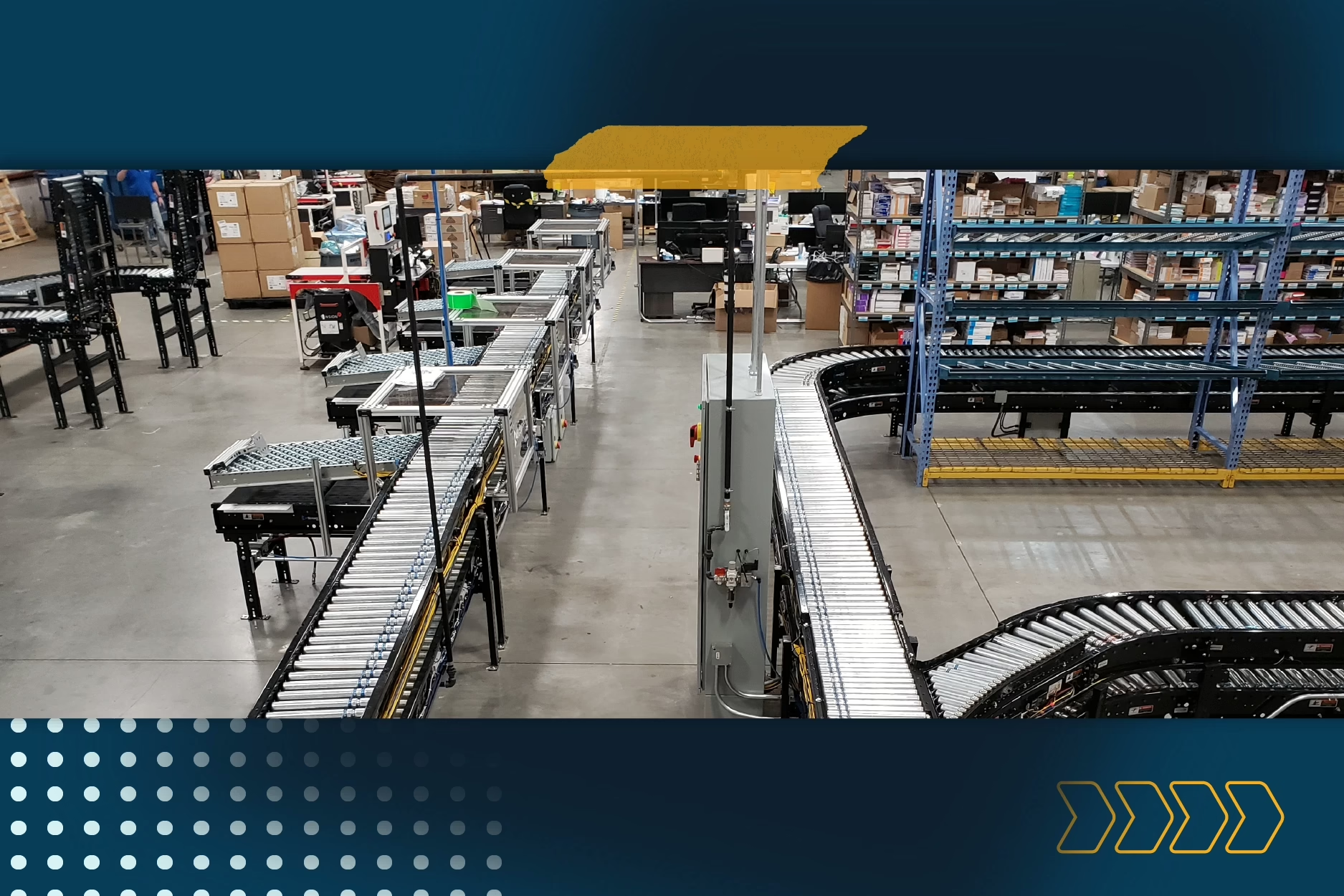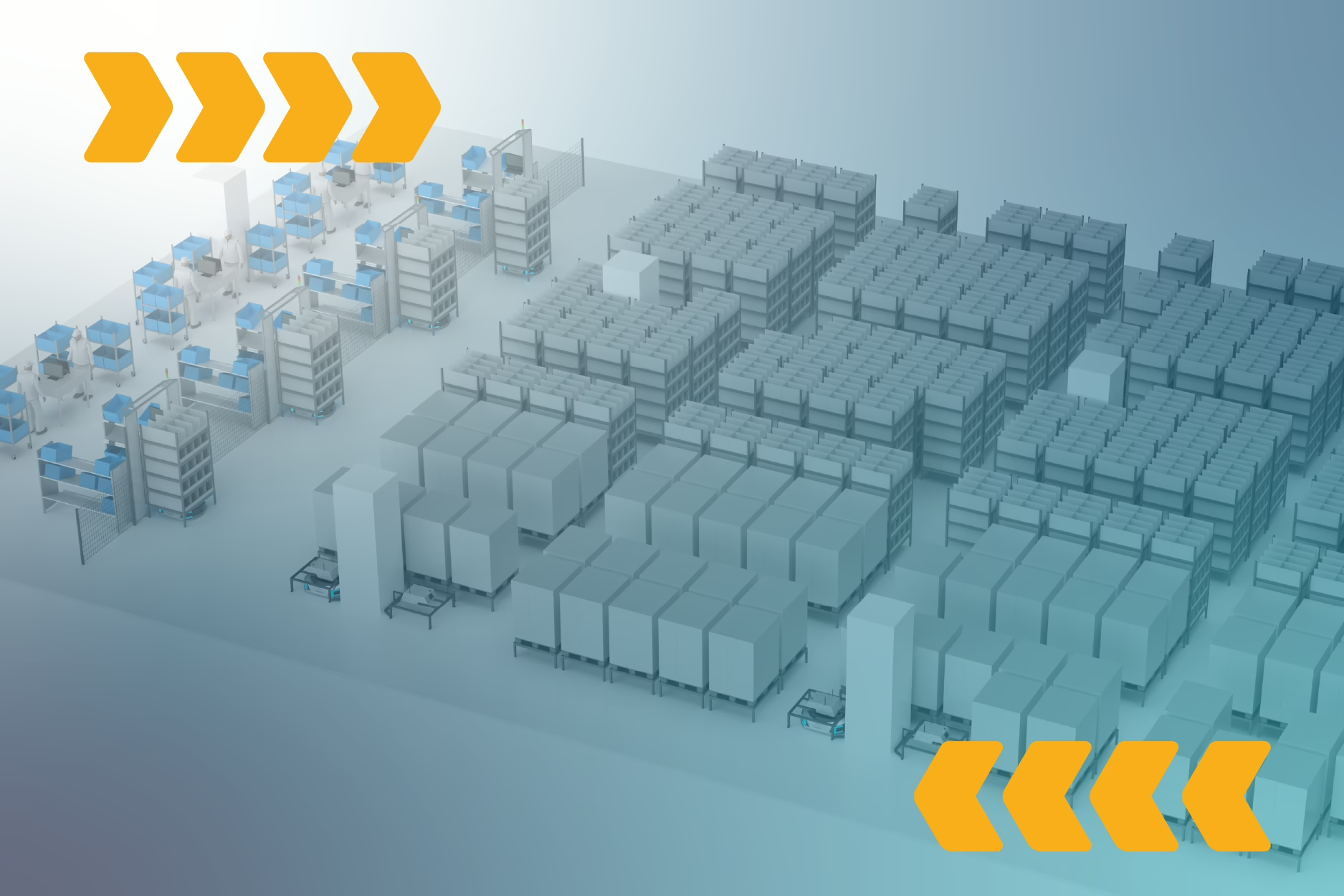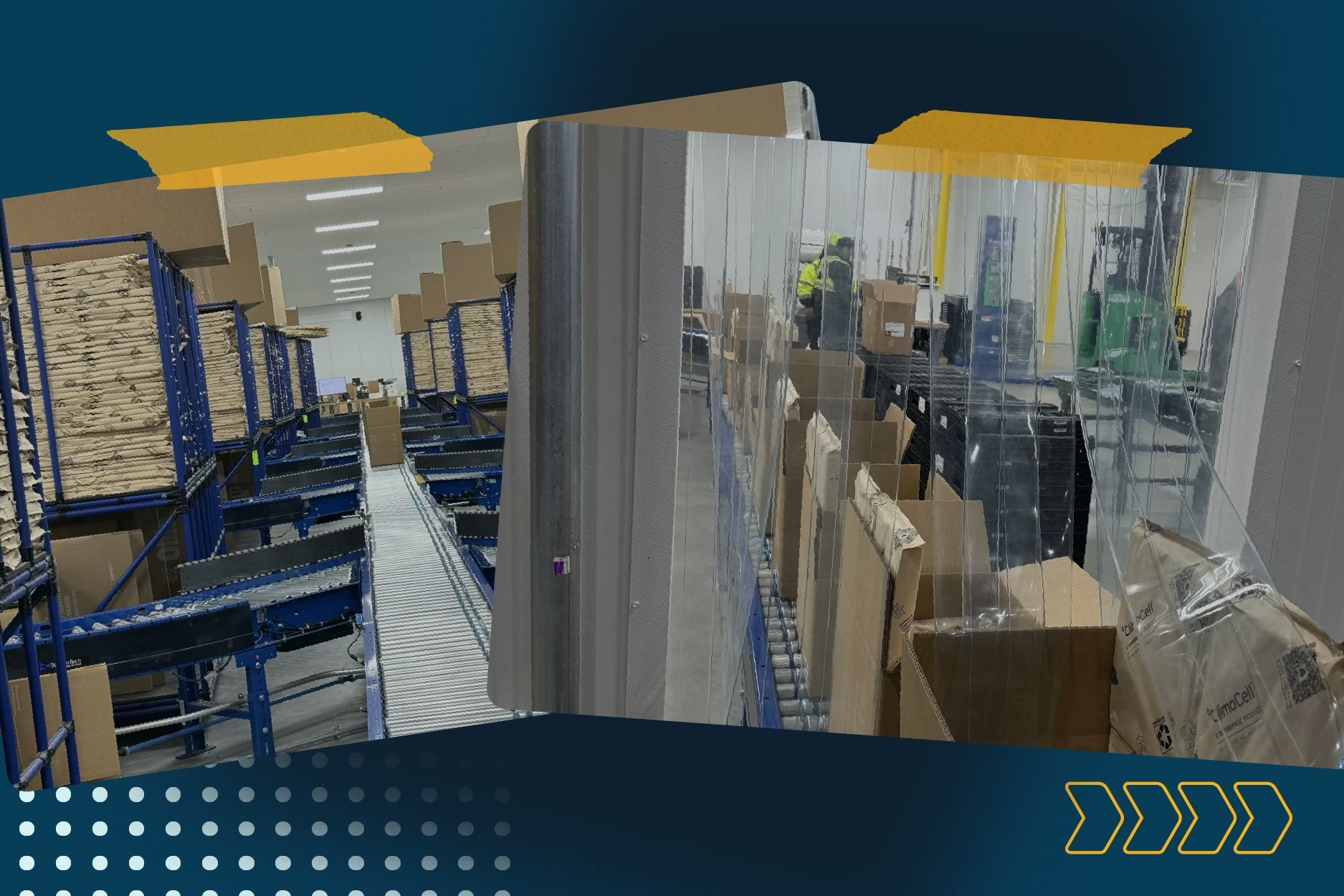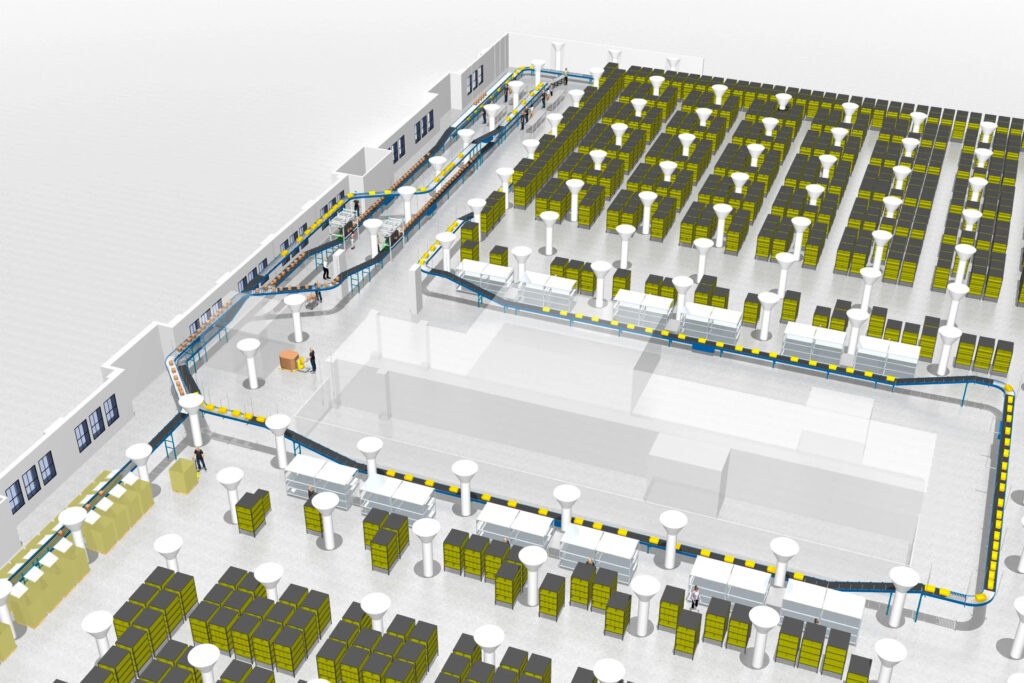Estimated reading time: 5 minutes
In our line of work, we get a lot of questions about warehouse automation. And by far, the most common questions are “When should we start thinking about warehouse automation?” and “How do we actually get started?”
If you are taking your first steps toward automation, these are natural questions. And the good news is, you do not have to completely redesign your facility to make it work. Sometimes, simply adding machines to the Pick, Pack, and Ship process can yield a huge increase in efficiency and throughput.
That said, you do have to plan carefully. What are your goals, and how will you justify the price of automation to company leadership? These are the kinds of questions we cover in our webinars, and we highly recommend that interested readers check those out.
In the meantime, here are a few key takeaways that can begin to shed some light on the warehouse automation journey.
Why Warehouses Are Turning to Automation
E-commerce may feel like an “old story,” but it continues to grow at a staggering pace. Global e-commerce sales are expected to surpass $6 trillion in 2024 and climb above $8 trillion by 2028. With that growth comes pressure on warehouses of all sizes—not just the Amazons of the world—to handle more orders with greater accuracy and speed.
Yet today, roughly 80% of U.S. warehouses are still non-automated. That gap represents both a challenge and an opportunity.
So why are more mid-sized businesses exploring automation? Some of the most common drivers include:
- New business demands: A new product launch, a new sales channel, or a large retail account with strict labeling and compliance requirements can force operational changes overnight.
- Order volume spikes: Landing that big customer is exciting—until you need to double output in a matter of weeks.
- Labor shortages: Competing with large distribution centers for workers makes scaling up difficult, if not impossible.
- Scalability limits of manual processes: Adding people to solve throughput problems works only for so long before inefficiency creeps in.
In short, change in the business often creates the “why now?” moment for automation.
What to Consider Before Automating
While many businesses these days are trying to justify automation by pointing to the cost of labor, this is hardly the entire story. In fact, automation can yield huge benefits and savings even if your labor force stays exactly the same. So it’s worth paying close attention to:
- Inventory accuracy. Mis-picks and rework eat away at margins and frustrate customers. Automation can help eliminate those errors at the source.
- Carrier costs. Without automated rate shopping and proper dimensional weighing, businesses often leave money on the table—or rack up chargebacks.
- Customer satisfaction. Every error or late order risks losing a customer for good.
Getting the right solution starts with a data-driven evaluation of your operation. That means looking closely at order lines versus total volume, analyzing package types, and understanding peak throughput needs. It also means identifying bottlenecks and being prepared to solve them, one by one.
Another often overlooked factor? IT involvement. Your warehouse management system and integrations are just as critical as conveyors and scanners. Bringing IT to the table early ensures smoother projects and fewer roadblocks later.
Building a Business Case
Every company defines ROI differently, and the “right” way depends on your leadership’s priorities. For some, it’s a simple payback calculation—will the system cover its costs in two years? For others, it’s about hitting a specific internal rate of return or balancing cost avoidance with cost savings.
But financial considerations aren’t the only drivers. Safety metrics (fewer injuries, fewer incidents), quality metrics (better accuracy, fewer reworks), and even sustainability (lower utility consumption, right-sized packaging) can all strengthen the case.
The most effective projects start with clarity: Identify the single outcome that matters most (whether that’s cutting carrier chargebacks, scaling throughput for peak season, or consolidating facilities) and make sure it stays front and center. Then back it up with data: error rates, labor costs, or seasonal spikes. This not only helps secure leadership approval, but also guides integrators toward the solution that will deliver the greatest impact.
Real-World Successes
Our case studies and webinars include several real-world examples from StreamTech projects that demonstrate the advantages to automating all or parts of the pack and ship operation. Some of those include companies such as:
- An outdoor retailer: Improved throughput from roughly 45-70 packages per person per hour to about 120 packages per person per hour after automation.
- An auto parts distributor: Freed up six employees previously dedicated to manual rate shopping, reassigning them to customer service and marketing roles where they added greater value.
- A technology company: Reduced labor need from 27 people down to just 2-3 after StreamTech redesigned a failed competitor system.
These examples illustrate how automation can deliver benefits beyond efficiency—supporting culture, customer experience, and even employee development.
Start Small, Scale Smart
Again, automation doesn’t have to be an “all at once” investment. Many clients begin with a single process, such as labeling, dimensioning, or pack table consolidation, and then expand over time. Designing modular solutions makes it possible to scale with your growth, rather than overspending up front.
Scaling smart also means not over-engineering a solution. For example, automating for 95% of typical orders, and allowing the 5% of exceptions to be handled manually, can reap huge benefits while controlling costs. As one of StreamTech’s engineers commonly says, “You don’t build the church for Easter Sunday.” In other words, you don’t need to design for your absolute peak day of the year—you can build for that 95th percentile and adapt as needed.
Want to learn more?
These considerations just scratch the surface. In addition to what has been discussed here, successful automation projects:
- Gather the right operational data.
- Involve IT and leadership early for smoother approvals.
- Navigate ROI discussions with senior decision-makers.
- Evaluate integrators and choose the right automation partner.
Those who are interested should check out our most recent webinar on the topic here.
And if you’re considering automation for your own facility, please reach out so we can begin engineering a solution for you.



